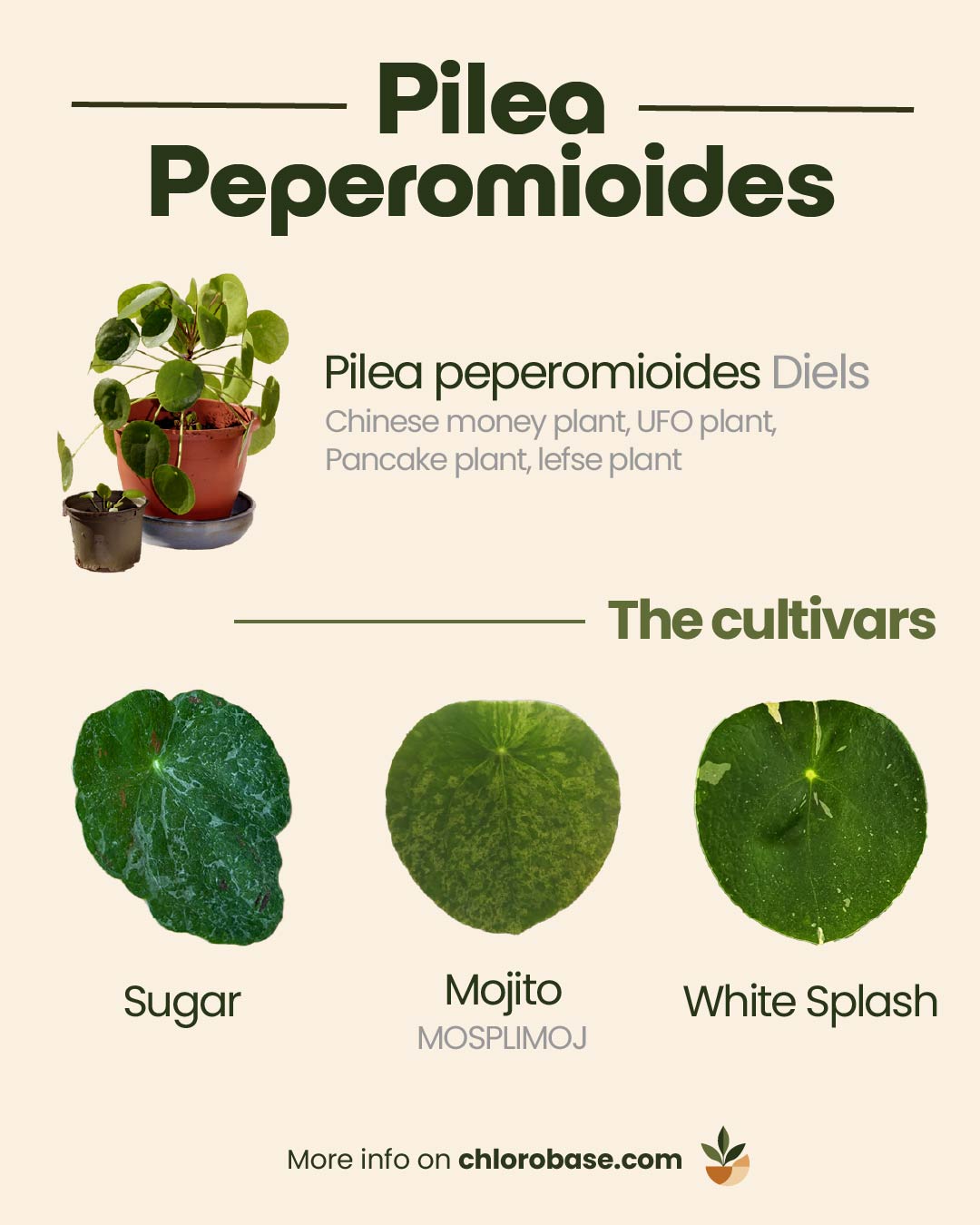The classic pilea and all its variants!
Let's talk about one of the most iconic houseplants out there: the Pilea peperomioides, commonly known as the Chinese Money Plant, Friendship Plant, or UFO Plant. This distinctive plant has gained widespread popularity among indoor gardeners, characterized by its round, coin-shaped leaves and adaptable nature.
Getting to know the pilea genus
Before we dive into the specific cultivars, let's explore the Pilea genus itself. These plants belong to the Urticaceae family (which includes stinging nettles, though Pileas are completely harmless). With over 600 species spread across tropical and subtropical regions worldwide, the genus is remarkably diverse. Among this vast family, Pilea peperomioides has emerged as a particular favorite.
Spot the differences with our visual chart

You can share this chart freely, but please keep our branding and tag us on social networks!
Pilea Peperomioides: The Classic Form

pilea peperomioides
Native to the Yunnan province in Southern China, this plant made its journey to Europe through a Norwegian missionary in the 1940s. The classic form features perfectly circular leaves in a deep, solid green color, growing on long petioles that create its characteristic pancake-like appearance. The leaves grow in a symmetrical pattern, creating an elegant, balanced silhouette.
Let's explore three striking cultivars that showcase different forms of variegation:
'Sugar': Subtle elegance

pilea peperomioides 'sugar'
The 'Sugar' cultivar features slightly irregular leaves compared to the classic form, with a distinctive fine speckling pattern across the surface. These tiny white dots create a frost-like effect that's most visible on mature leaves, giving the plant a delicate, crystalline appearance.
'White Splash': Striking Contrast

pilea peperomioides 'white splash'
'White Splash' displays bold patches of creamy white variegation against the dark green base color. These irregular patterns can vary significantly between leaves, with some showing large central patches while others develop streak-like patterns. The high contrast makes this cultivar particularly eye-catching.
'Mojito': Natural variation

pilea peperomioides 'mojito'
The 'Mojito' cultivar presents a natural marbling effect of light and dark green shades across its leaves. Unlike the stark white variegation of other varieties, this cultivar features a more subtle blend of green tones that create a sophisticated, camouflage-like pattern.
Choosing your pilea
Each variant offers its own unique charm while maintaining the beloved characteristics of the Pilea family. Whether you prefer the classic elegance of the original form, the crystalline effect of 'Sugar,' the dramatic patterns of 'White Splash,' or the subtle marbling of 'Mojito,' there's a perfect Pilea for every plant enthusiast. Why not try to collect them all?
For detailed information about caring for these different varieties, click on each plants!
